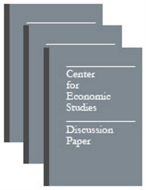Housing Capital and Intergenerational Mobility in the United States
Housing Capital and Intergenerational Mobility in the United States
Abstract
Housing represents the most important capital asset for most U.S. families. Despite substantial analysis of the intergenerational mobility of income, large gaps in our knowledge of the distribution of housing assets and their transmission over time remain, as housing is generally not reflected by income flows. Using novel linked data that combines survey responses with administrative tax data and information on ownership and valuation from property tax records for over 3.4 million families, we provide new evidence on the intergenerational transmission of housing capital. We find that housing capital is more persistent across generations than labor income. We document important disparities between average housing outcomes for White and Black children. These difference persist even conditional on parent rank in the distribution of housing assets, with the gap growing throughout the parental housing capital distribution. A decomposition shows that average differences in children’s labor market outcomes associated with parental assets explain about half of the observed intergenerational persistence (a “labor income channel”), and that there is also a substantial “direct channel” — conditional on children having the same earnings, children of parents with more housing assets have more assets themselves on average. The direct channel is also important for explaining the intergenerational gap in outcomes of Black and White children. Finally, we present quasi-experimental evidence that local housing supply constraints help explain spatial differences in intergenerational persistence across US counties. Our results establish the importance of housing markets, both independently from and jointly with labor markets, in shaping the intergenerational persistence of economic resources.
Others in Series
Working Paper
Working Paper
Working Paper




